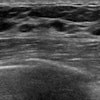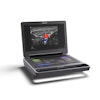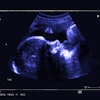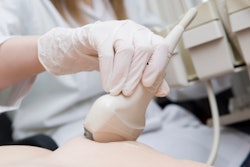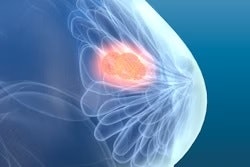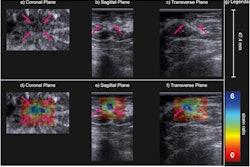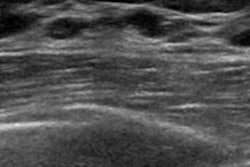Many women with early-stage HR+HER2- breast cancer and a negative presurgical axillary ultrasound can skip sentinel lymph node biopsy, a study presented April 11 at the American Society of Breast Surgeons Annual Meeting in Orlando, FL, found.
In his talk, Andreas Giannakou, MD, from Brigham & Women’s Hospital and Harvard Medical School in Boston showed results suggesting that nodal disease burden and oncologic outcomes among women in a real-world setting are similar to criteria in the Sentinel Node vs. Observation After Axillary UltraSound (SOUND) trial.
“Although our follow-up is limited, oncologic outcomes are excellent and similar to the sentinel lymph node biopsy arm of the SOUND trial,” Giannakou said in a pre-meeting press conference.
 Andreas Giannakou, MD, from Brigham & Women’s Hospital and Harvard Medical School presents research highlighting how many women with early-stage HR+HER2- breast cancer and a negative presurgical axillary ultrasound can skip sentinel lymph node biopsy.
Andreas Giannakou, MD, from Brigham & Women’s Hospital and Harvard Medical School presents research highlighting how many women with early-stage HR+HER2- breast cancer and a negative presurgical axillary ultrasound can skip sentinel lymph node biopsy.
Results from the SOUND trial were published in 2023, showing that omitting axillary surgery could be an option for women with small breast cancers and a negative result on ultrasound of the axillary lymph nodes.
While the trial included all breast cancer subtypes, the Giannakou team focused on examining nodal disease burden and oncologic outcomes among women with cT1N0 HR+HER2- negative breast cancer who would have been eligible for the SOUND trial. The study included 510 women who met SOUND trial eligibility criteria.
The researchers reported that, compared with patients without preoperative axillary ultrasound, women undergoing ultrasound were younger, with a median age of 59 years versus 63 years (p = 0.001), had higher grade tumors (p < 0.001), and were more likely to undergo mastectomy (20% vs. 13.2%, p < 0.001).
Additionally, oncologic outcomes at three years follow-up were not statistically different between patients with and without axillary ultrasound.
Of the 510 patients who met SOUND trial criteria, sentinel lymph node biopsy was omitted in 98 (19.2%), failed in one, and was completed in 411 (80.5%).
The team found that clinical and pathologic characteristics, overall nodal disease burden, and recurrence rates for SOUND-eligible women and the published SOUND population were similar. However, Giannakou noted that median follow-up was shorter (26.3 vs. 69.6 months) and there were fewer postmenopausal patients (57.4% vs. 78.8%). Among SOUND-eligible women, the median age was 56 years, the median tumor size was 1.3 cm, and 81.7% had grade 1 or 2 disease.
Additionally, lumpectomy was performed in 312 patients, of whom 276 (88.5%) received whole breast radiation. At least one positive sentinel lymph node was found in 59 (14.3%) patients. Of those with positive nodes, 15 (25.4%) patients underwent axillary dissection with additional nodal disease found in 9 (15.2%).
At median follow-up of 26.3 months, there were three (0.7%) local recurrences, three (0.7%) regional recurrences, four (1%) distant recurrences, and three (0.7%) deaths. Additionally, the three-year rates of locoregional recurrence, distant recurrence, invasive disease-free survival, and overall survival were 0%, 0.9%, 98.4%, and 100%, respectively.
Finally, the team reported that of the women who underwent lumpectomy, 88% had a negative biopsy and among those who had nodal disease on biopsy, 75% had only one positive node. Less than 1% had more than four positive lymph nodes, and cancer recurrence rates were both low and similar to SOUND trial participants, though with shorter follow-up.
Giannakou said that these results support careful implementation of omitting surgical staging of the axilla in postmenopausal women with HR+HER2- breast cancer.
